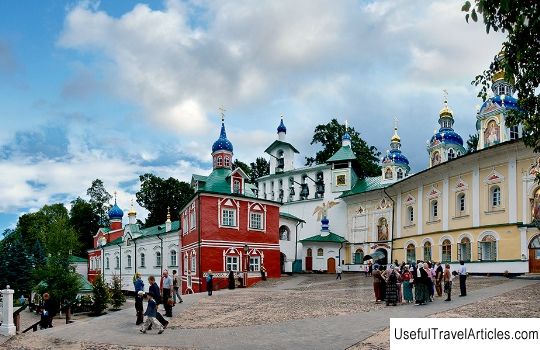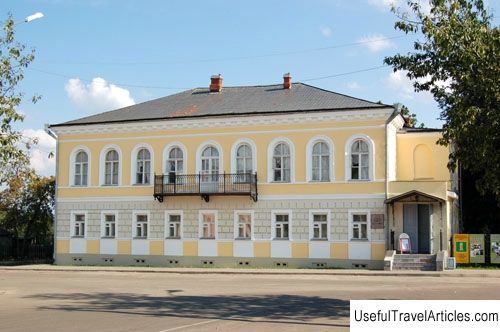Museum of bells description and photo - Russia - North-West: Valdai
Rating: 8,0/10 (6654 votes) 
Museum of bells description and photos - Russia - North-West: Valdai. Detailed information about the attraction. Description, photos and a map showing the nearest significant objects. Photo and descriptionFor a long time, calculated for centuries, bells accompanied the ringing of the entire life of the people. They not only brought something new into the ordinary course of the days, but also announced the time of rest and work, joy and sorrow, as well as common prayer. Bells announced the onset of natural disasters, the approach of the enemy; it was the bells that greeted their loud ringing of folk heroes and dear guests, called for conciliarity and unity. The desire to answer the questions: when exactly the bells appeared, as well as how they are born and how long they live - brings a lot to the museum number of visitors. The museum has the opportunity to see a Russian bell from the 16th century BC. BC, ancient Chinese bell of the 16th century BC, Italian campanus of the 12th century, Buddhist wind bell of the 17th century, ship bell of the 20th century or Valdai Yamskaya bell of the early 20th century. It is thanks to these exhibits that it becomes clear that the bells were the very thing that closely linked people of different countries, cultures and beliefs. The shepherd's bell, created in the 16th century BC, originally from China, does not differ in anything particularly remarkable from the cow botal made in the forge in the village of Edrovo in 1930. By analogy with Chinese, the Edrovsky bell is forged of iron and riveted and has a dull and deaf voice. And although both bells are outwardly unassuming, they have a clearly verified inner essence, consisting in the function of a talisman that scares away evil. At all times, the East has always considered its main function to create bells that can scare away evil, and the West created bells that attracted with their beauty of voice and form. Legends say that Christian bells appeared in Italy, namely in the province of Campana, and were invented by Saint Peacock in the image of wildflowers, which appeared to him in a vision like the voice of heaven itself. It was these metal "flowers" that began to be adapted on the roofs of churches, and they only rang when the wind blew. While bells appeared in Europe, they folded the ringing manner into the ones that came to Russia with the appearance of the bells themselves and lasted until the 17th century, until a special Russian ringing was introduced. It can be said that Byzantium gave Russia Orthodoxy, but bequeathed not to use bells, but to ring only in a beater. Only in the museum can you find out: how the Byzantine beat differs from the Novgorod or civil one, what is their difference or similarity. Besides, here you can see the very first bell made by the Pskov craftsman P. Grigorieva and T. Andreeva in 1536. In Germany, bells appeared only in 1680, and in Sweden, trophy bells appeared in 1692. In St. Petersburg, Yaroslavl, Ustyuzhna, Valday, Vyatka, bells were cast for churches, ships, railways. In addition, there were table, pit and gift bells; small bells were hung on the neck of the cattle, on the doors they served as a bell. The peculiarity of the exhibits is that you can not only watch but also listen to them. The bells, placed on three belfries, provide a unique opportunity to hear the bell ringing in the professional performance of the museum staff, see the bell ringing techniques and performance techniques and try to call visitors. When the bells ring, legends come to life the sounds of bells seem to pierce the soul and body, linking the Earth and Heaven with an invisible thread, like God and man. It is at this moment that it becomes clear that this ringing is the voice of Heaven. In the museum of bells you can learn: how European bells sing, what the Russians say, what does the crimson ringing mean and who is Jo Haazen - the master of the crimson ringing, what is the commonality of the "Yam accordion", banjong and carillon the Russian road almost a century and a half ago, and whether there is a Vechevoy Novgorod bell. The Museum has materials on the history of colossus studies, as well as the current state of bell-ringing art and bell craft. Here you can find out who were the largest collectors and researchers, what were the largest factories producing bells and who are the craftsmen who create bell museum souvenirs.    We also recommend reading Travnik old town description and photos - Bosnia and Herzegovina: Travnik Topic: Museum of bells description and photo - Russia - North-West: Valdai. |




